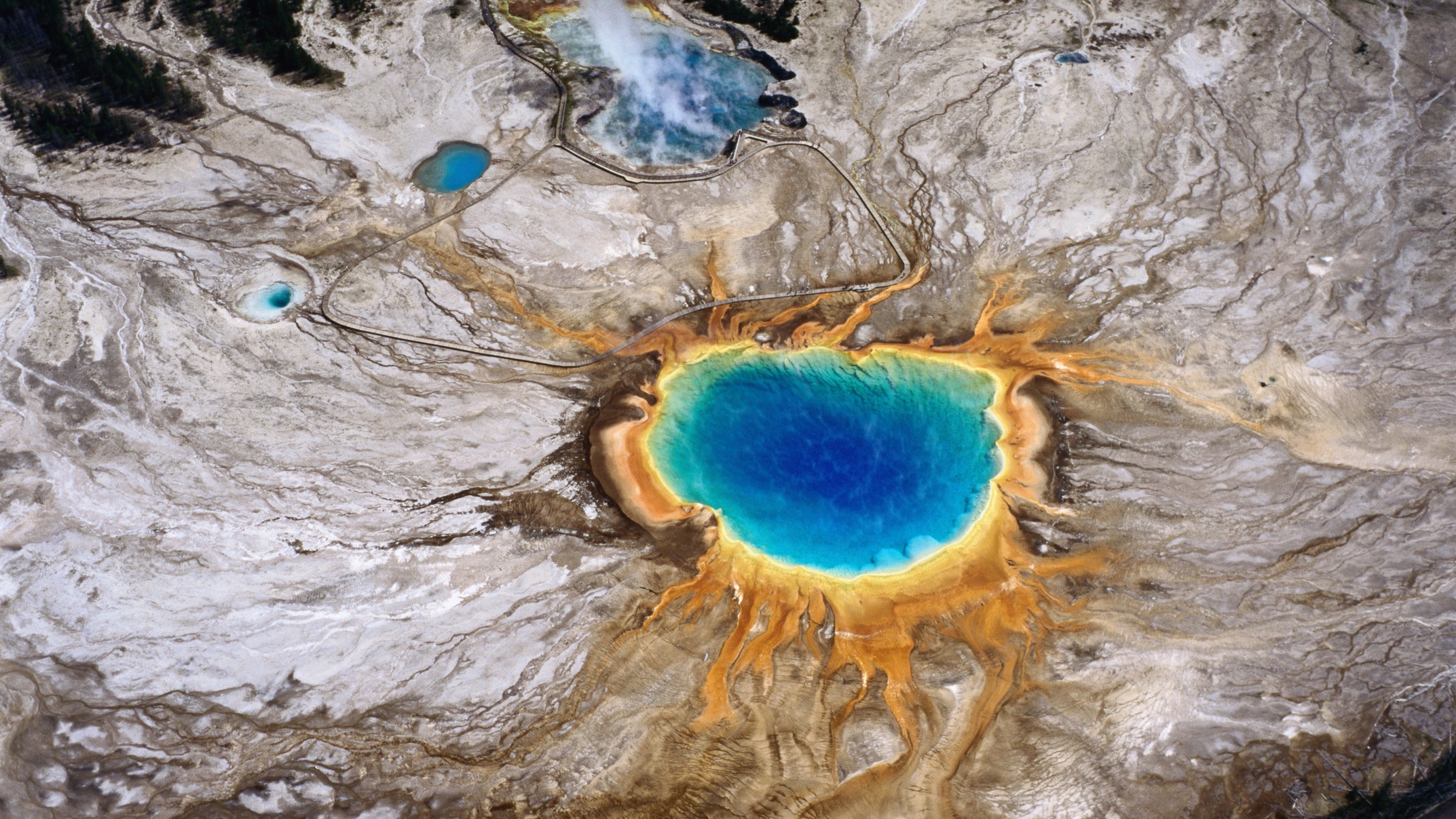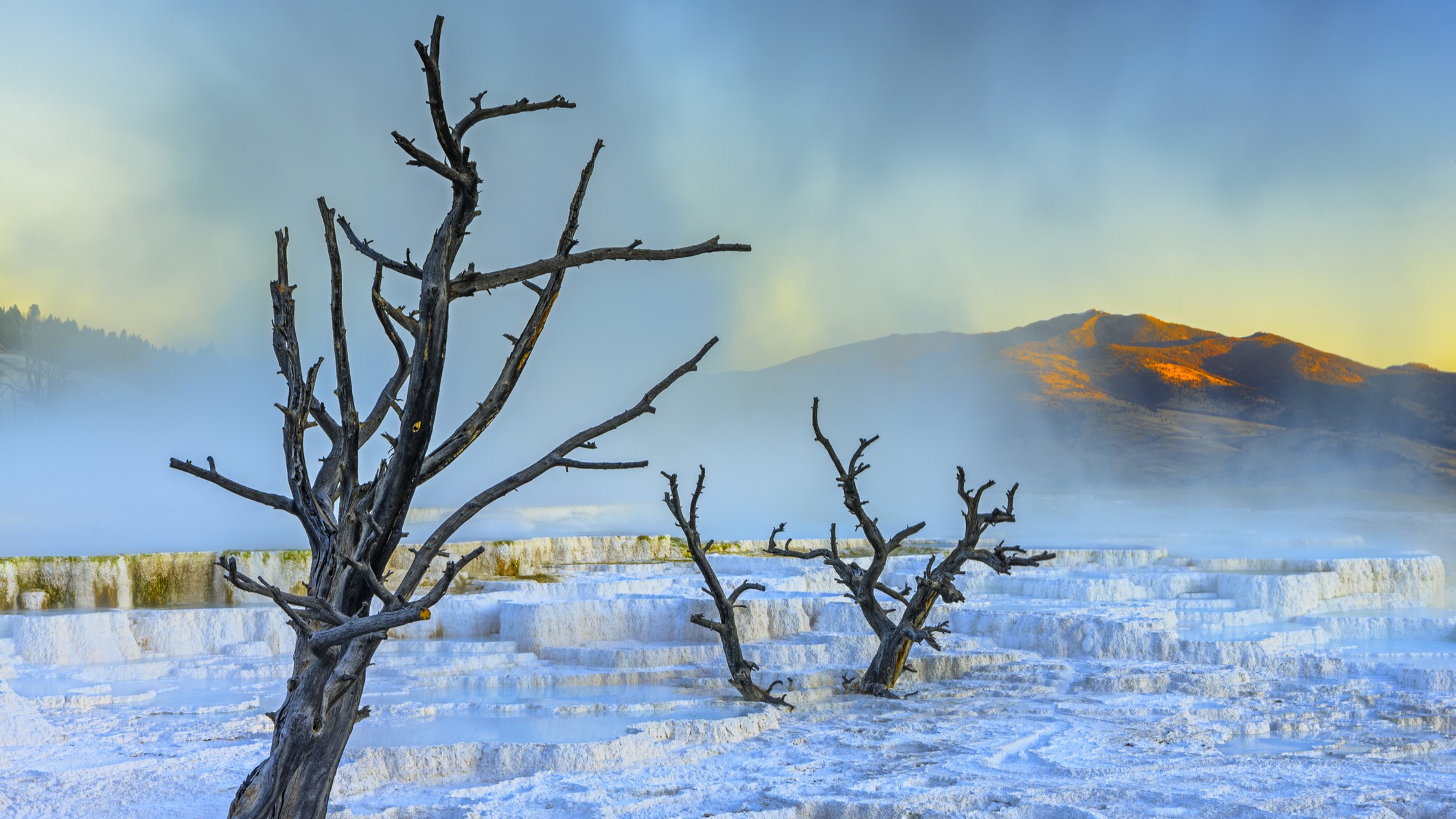
Few volcanoes on Earth boast the fantastical title of "supervolcano," but what makes these uber volcanoes so super, and is the superlative always justified? It very much depends on who you ask.
A supervolcano is a volcano that has produced at least one supereruption, meaning that at some point in its history, it has ejected more than 240 cubic miles (1,000 cubic kilometers) of volcanic material — enough to fill Sydney Harbour 2,000 times. This scores an 8 on the Volcano Explosivity Index (VEI), a scale that measures the volume of material ejected, as well as the height and intensity of the eruption plume.
A supereruption is "over 1,000 times bigger than what Mount St. Helens did in 1980," Michael Poland, a research geophysicist and scientist in charge of Yellowstone Volcano Observatory, told Live Science in an email. That cataclysmic eruption produced a nine-hour-long explosion that fired rocks and ash more than 15 miles (24 kilometers) into the air and blasted the top off the volcano. The resulting cloud of debris caused complete darkness up to 250 miles (400 km) from the volcano, with ash falling as far as the Great Plains — more than 930 miles (1,500 km) away.
Supereruptions eject so much magma that Earth's crust above the magma chamber collapses into a bowl-shaped landscape known as a caldera. Calderas, such as the one at Yellowstone, can measure dozens of miles across and host volcanoes, or cinder cones, that can produce smaller eruptions.
The volcano at Yellowstone has had two supereruptions. The largest, the Huckleberry Ridge Tuff eruption, occurred 2.1 million years ago and spewed 590 cubic miles (2,450 cubic km) of volcanic debris. The other, known as the Lava Creek eruption, produced 240 cubic miles of material 631,000 years ago.
Yellowstone has experienced dozens of smaller eruptions since, Poland said, leading to confusion around the definition of a supervolcano. "I think that the term is misleading because it implies to most that those sorts of volcanoes only ever have massive explosions, when in reality the common form of eruption at such volcanoes is a much smaller event, like a lava flow," he said.

The supervolcano label is also applied by the media and by some scientists to volcanoes that have never produced a supereruption, such as Campi Flegrei in Italy, muddying the waters further, Poland said. The largest eruption at Campi Flegrei, which occurred 39,000 years ago, produced 10 times less volcanic material than a supereruption, scoring a 7 on the VEI. "But at the same time, that it has not had such an eruption does not diminish Campi Flegrei in any way," Poland said. "Even a smaller eruption there could be massively disruptive."
Worldwide, nine active volcanoes fulfill the criteria for a supervolcano, according to a 2022 study. In the U.S., Yellowstone is joined by Long Valley in California and Valles in New Mexico. The other supervolcanoes are Toba in Indonesia, Taupō in New Zealand, Atitlán in Guatemala and Aira, Kikai and Aso in Japan.
"Beneath the ocean is a different issue, but supervolcanoes are less likely to develop in these settings," the study authors — Shanaka de Silva, a professor of volcanology at Oregon State University, and Stephen Self, an adjunct professor of volcanology at the University of California, Berkeley — wrote.
While de Silva and Self argue in favor of using the term "supervolcano" to refer to these nine volcanoes, Poland prefers calling them "caldera systems" — a category that he takes to include "any volcano that has experienced an explosion massive enough that the surface has collapsed into a partially emptied magma chamber," he wrote in a 2019 article in Yellowstone's Caldera Chronicles.
"I think 'supervolcano' also implies to some people that there used to be a really massive mountain where the eruption occurred," he said, but volcanoes that have had supereruptions "never had such mountains" and instead featured "broadly scattered eruptive vents."
De Silva and Self similarly noted in their study that "supervolcanoes differ from other volcanoes not only in that the biggest eruptions are outsized and their impact is potentially far greater than normal eruptions, but the appearance of the volcano itself after eruption is also distinctive: it does not conform to the common image of a volcano."
So why not refer to them as caldera systems, large calderas or caldera complexes? Supervolcanoes have key features that distinguish them from volcanoes that form smaller calderas when they erupt, de Silva and Self wrote. Notably, unlike other caldera-forming volcanoes, supervolcanoes expand their magma reservoirs rather than blowing their tops frequently.
"We still don't understand how these large magma chambers are able to form," Poland said. But one explanation is that the elastic magma chambers that feed supervolcanoes form when blobs of magma that differ in composition mix together, Poland said. "Once you assemble such a large and complex magma reservoir, it can become destabilized and erupt."
Research suggests supereruptions at Yellowstone involved multiple explosive events. "It's not a single explosion that empties the chamber all at once," Poland said. "Rather, the eruptions are complex events that tap those multiple coalesced pods of magma" and "might be separated by weeks or even years."
While the term "supervolcano" is sometimes misused, it's probably not going anywhere, de Silva and Self wrote. "Rather than throw our hands up in frustration and ignore it, we should recognize that the term is here to stay and work its correct usage."







